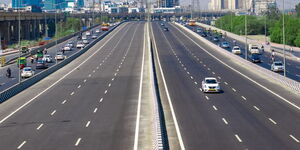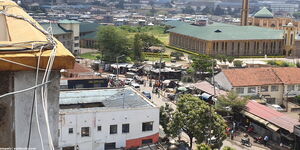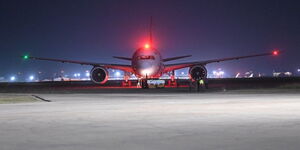Ever wondered why sometimes the skies are covered with trails of white ‘smoke’ especially during or after a plane flies by?
Many believed that it was a move by the planes creating a pathway not to be interfered with by another plane to avoid coalitions in the air.
But what are these thin white lines? Kenyans.co.ke sought to understand this phenomenon.
Well, these clouds are known as contrails, short for condensation trails.
Jets leave white trails, or contrails, in their wakes for the same reason you can sometimes see your breath when you puff.
The hot, humid exhaust from jet engines mixes with the atmosphere, which at high altitudes is of much lower vapour pressure and temperature than the exhaust gas.
Water vapor is one of the byproducts of jet fuel combustion and will turn into ice crystals in the cold air at the high elevations where jet airplanes fly.
Those ice crystals create a cloud (the contrail).
Contrails can evaporate quickly if humidity is low, or they can linger, and even grow by taking in water from the surrounding atmosphere when humidity is high.
These contrails may appear to be grid-shaped, which is due to flight patterns generally following routes or corridors established by the Airspace System.
Just as there are highways for vehicles crisscrossing, there are similar corridors/paths in the sky that planes or jets follow.
Depending on a plane's altitude, and the temperature and humidity of the atmosphere, contrails may vary in their thickness, extent and duration.
Interestingly, the nature and persistence of jet contrails can be used to predict the weather.
A thin, short-lived contrail indicates low-humidity air at high altitude, a sign of fair weather, whereas a thick, long-lasting contrail reflects humid air at high altitudes and can be an early indicator of a storm.
It is important to note that contrails seen behind airliners are not dangerous as their main composition is pure water.
Jet fuel is also highly refined to remove as many contaminants as possible.
The next time you hear an airplane flying overhead, look up at the sky and you’ll probably notice a white trail of smoke in its wake.
From small single-engine airplanes to large four-engine airplanes, all jet engine airplanes produce white smoke.
However, it doesn’t stay in the sky forever, so watch out.












